






Stainless Raw Material: NPI Supply and Demand
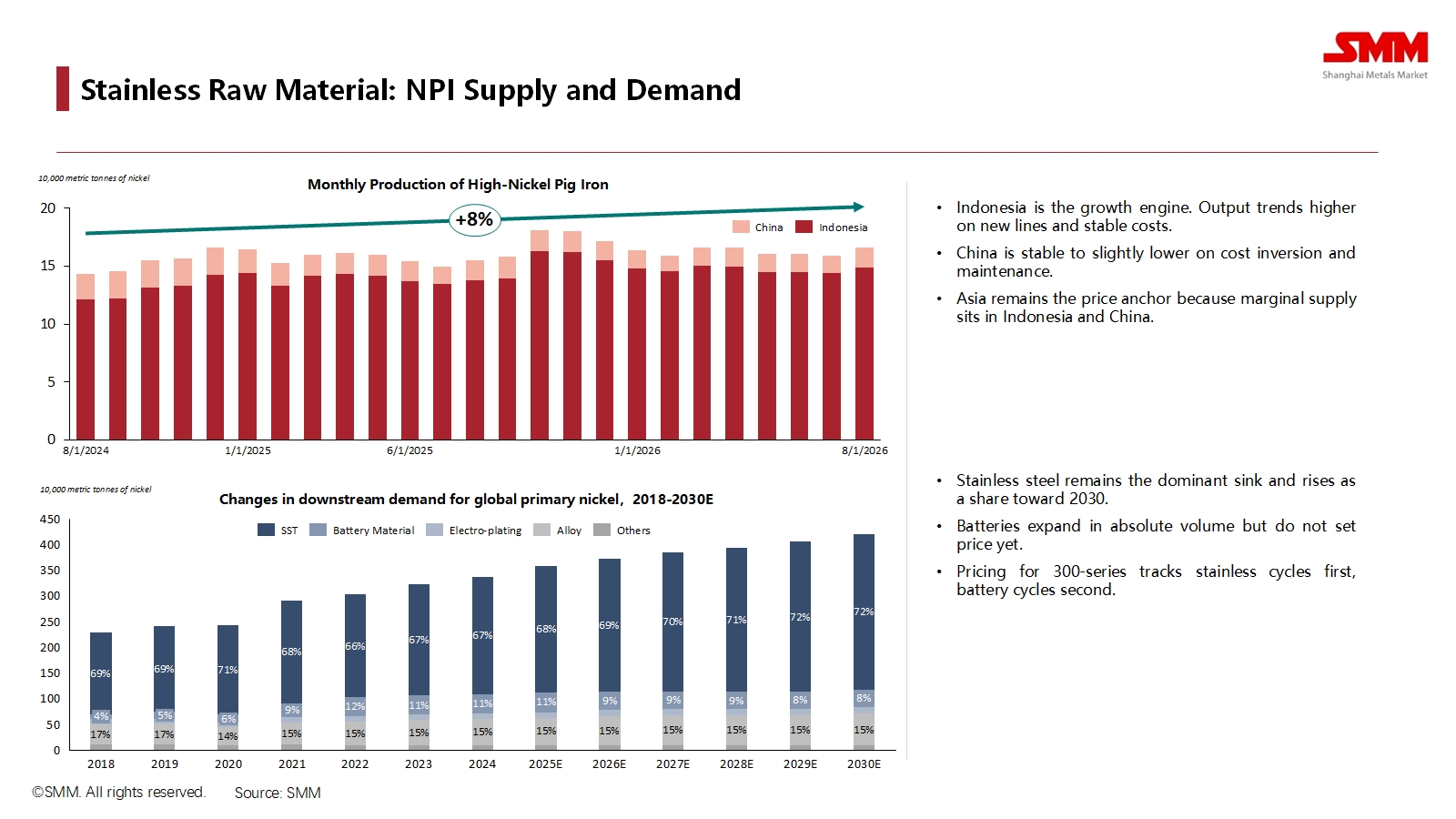
The analysis began with the core raw material for stainless steel: Nickel Pig Iron (NPI). The data clearly shows that Indonesia has become the undisputed growth engine for global NPI supply. Driven by new production lines and stable costs, its output is projected to grow by 8% through 2026. In contrast, China's production remains stable to slightly lower due to cost inversion and maintenance.
On the demand side, the stainless steel industry remains the primary consumer of primary nickel. Its share of demand is forecast to continue rising, reaching 72% by 2030. This underscores that despite the growth in battery materials, the health of the stainless steel sector will continue to dictate the fundamentals of the global nickel market for the foreseeable future.
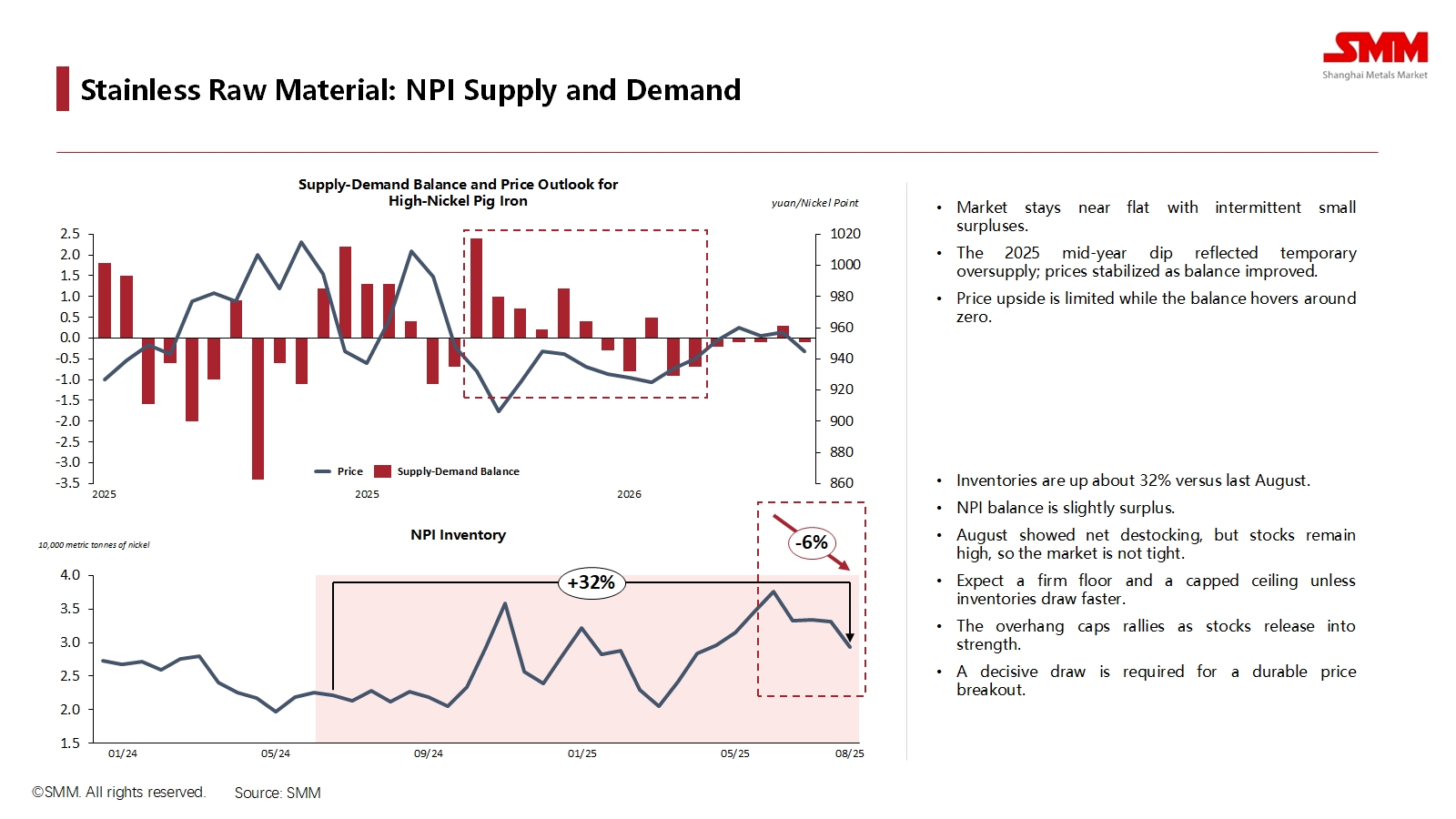
Despite supply growth, SMM forecasts that the NPI market will remain in a tight balance through 2026, with supply and demand largely matched, punctuated by occasional small surpluses. This balanced state limits the potential for significant price upside. Furthermore, a substantial inventory overhang—with stocks approximately 32% higher than the previous August—is capping prices. Any upward price momentum would likely be met by the release of these inventories, thus inhibiting a sustained rally.
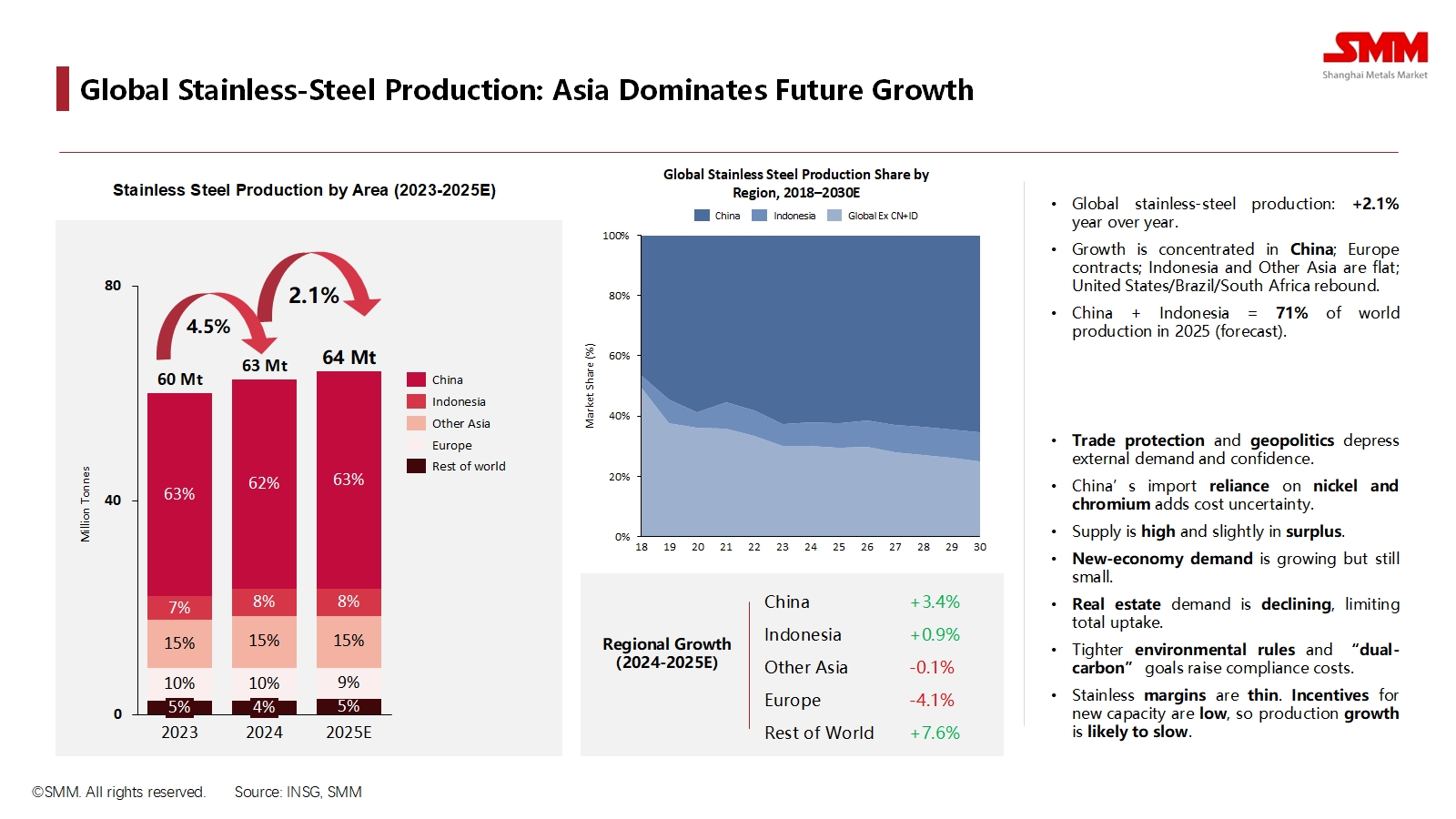
The geographic center of global stainless steel production has decisively shifted to the East. Projections show that by 2025, China and Indonesia will collectively account for 71% of the world's total output. Global production is expected to reach 64 million metric tonnes in 2025, a modest 2.1% year-over-year increase.
However, this growth is not evenly distributed. While China's output is set to grow by 3.4% and regions like the US and Brazil are recovering, Europe's production is projected to contract by 4.1%. The industry faces significant headwinds from global trade protectionism, rising environmental compliance costs, and slowing real estate demand in China, all of which are squeezing margins and reducing the appetite for new capacity investments.
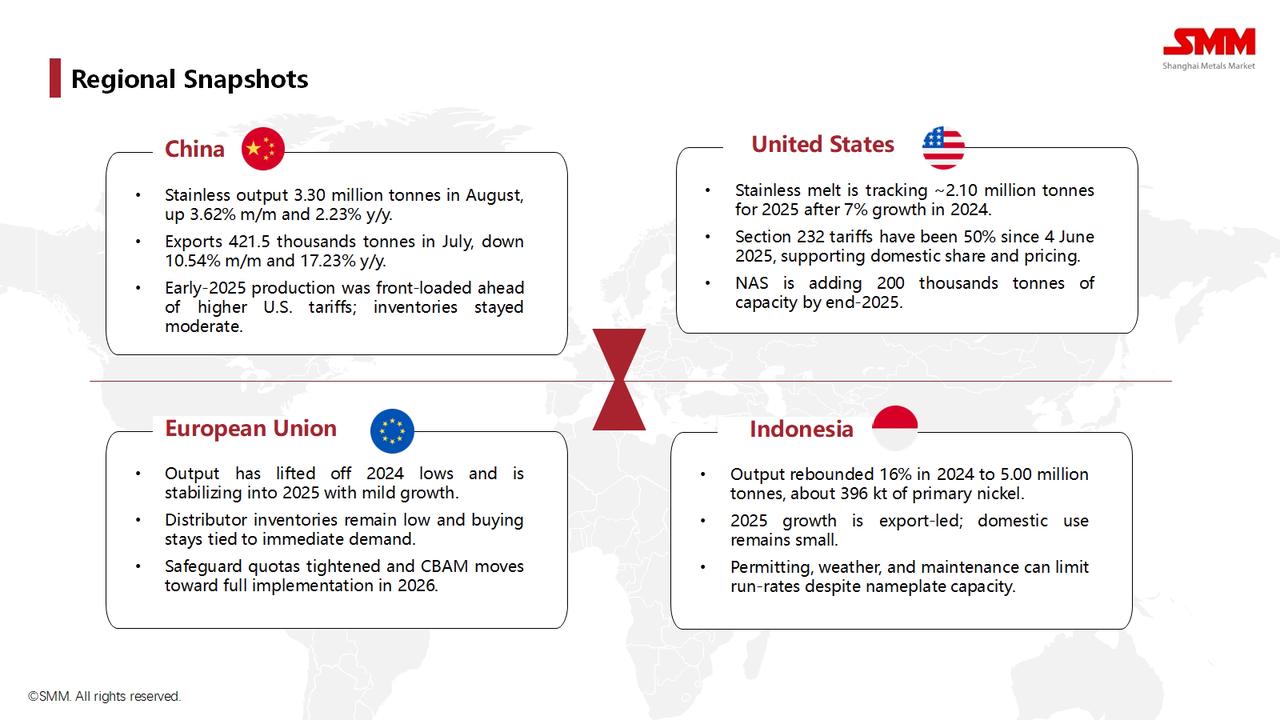
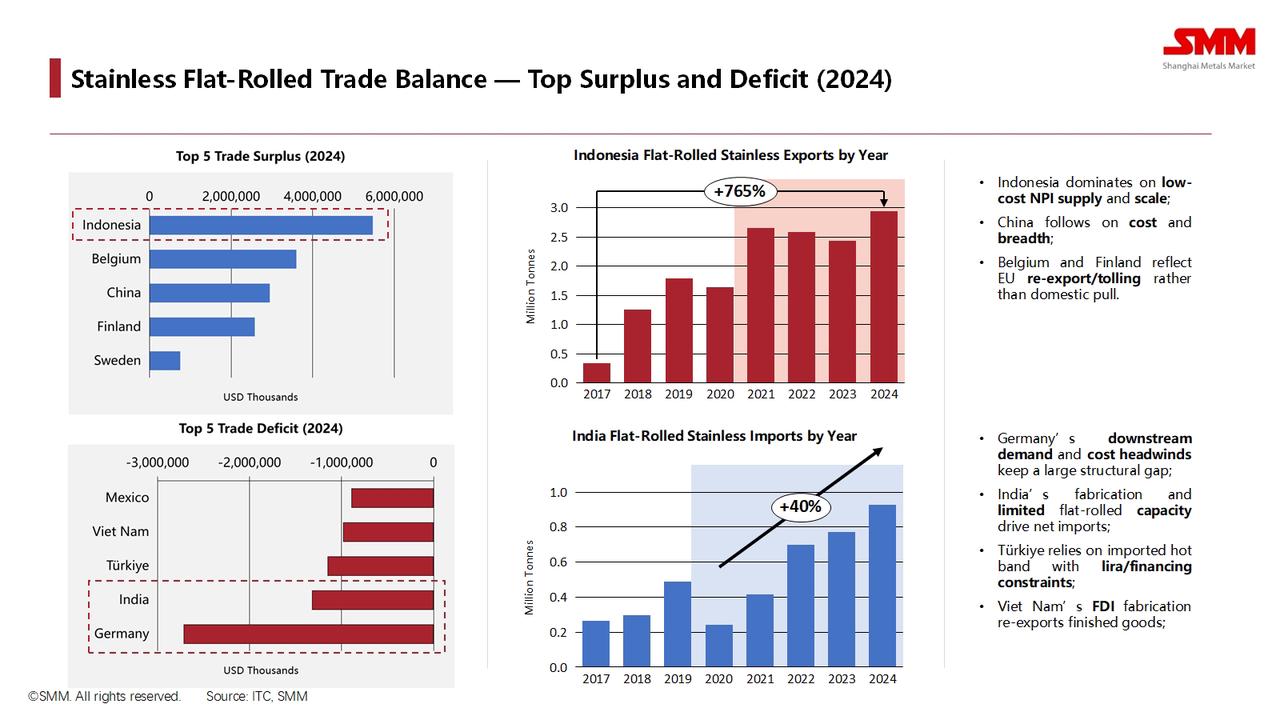
Trade data reveals a clear global imbalance. Leveraging its low costs and massive scale, Indonesia stands as the world's largest net exporter of stainless flat-rolled products by a significant margin. China follows as the second-largest. On the deficit side, Germany has the largest structural trade deficit, driven by strong downstream demand and high domestic production costs, while India and Turkey are also major net importers to feed their domestic manufacturing sectors.
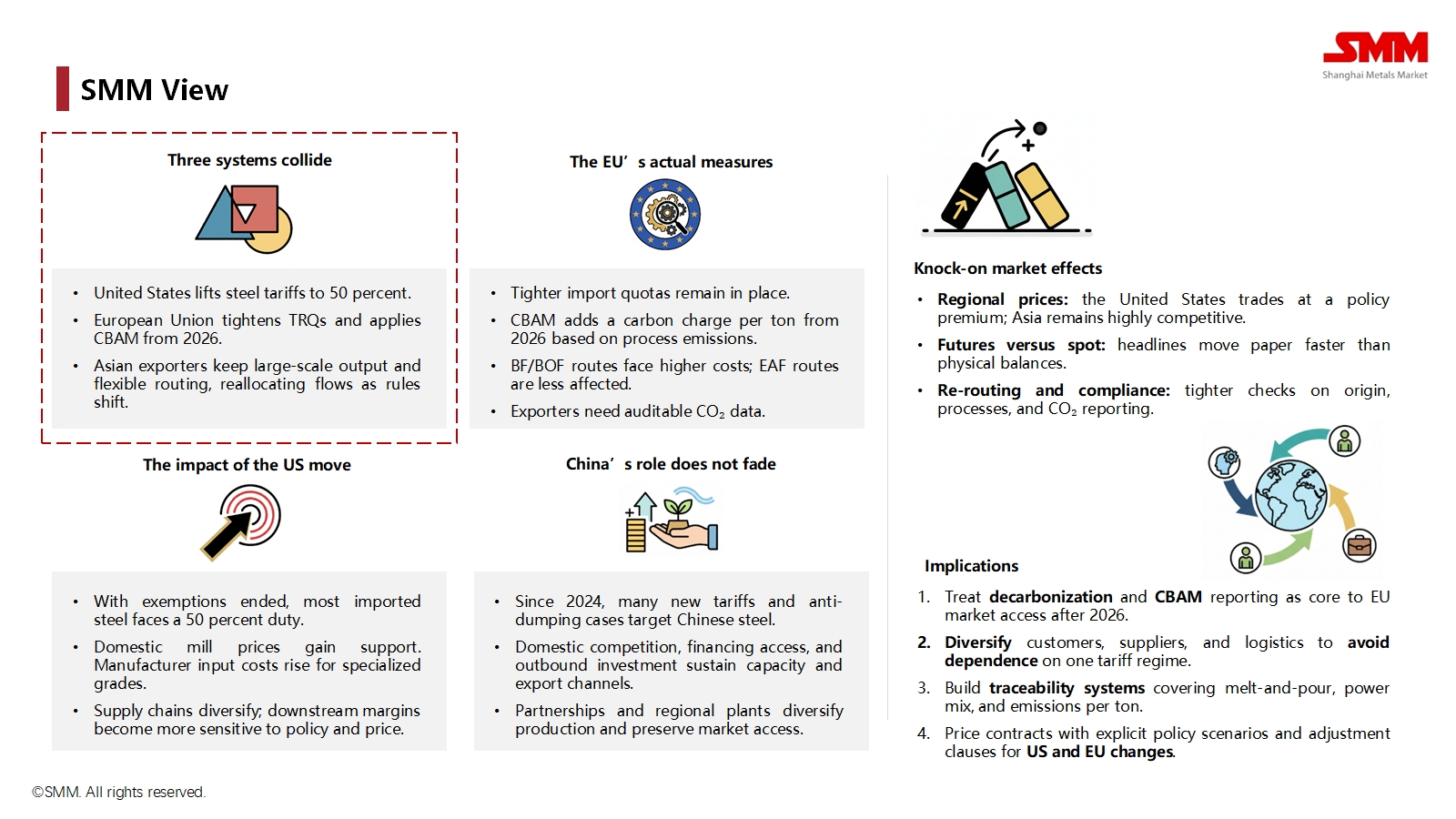
The global stainless steel market is now defined by what SMM calls a "collision of three systems":
This collision is reshaping the global market, leading to significant regional price divergence and increasingly strict compliance requirements for rules of origin, production processes, and carbon emissions reporting.
The global stainless steel market is currently undergoing a profound transformation driven by a confluence of trade policy, industrial relocation, and supply-demand fundamentals. The core contradictions and future direction of the market can be analyzed from the following dimensions:
Market Fundamentals Analysis: A Reshaping Supply Landscape Amidst Weak Demand
Based on these fundamentals of "ample supply and weak demand," SMM believes the overall upside potential for stainless steel prices is constrained. Lacking strong demand drivers, the market will continue to face downward pressure in the short term, with price volatility being increasingly influenced by regional supply-demand mismatches and policy factors.
Strategic Implications for Businesses: Adapting to Survive and Thrive in the New Normal
Against this macroeconomic backdrop, market participants must undertake deep strategic adjustments to adapt to the new normal. SMM proposes the following four core recommendations for businesses in the industry:
Written by Bruce Chew (bruce.chew@metal.com)
For queries, please contact Lemon Zhao at lemonzhao@smm.cn
For more information on how to access our research reports, please email service.en@smm.cn